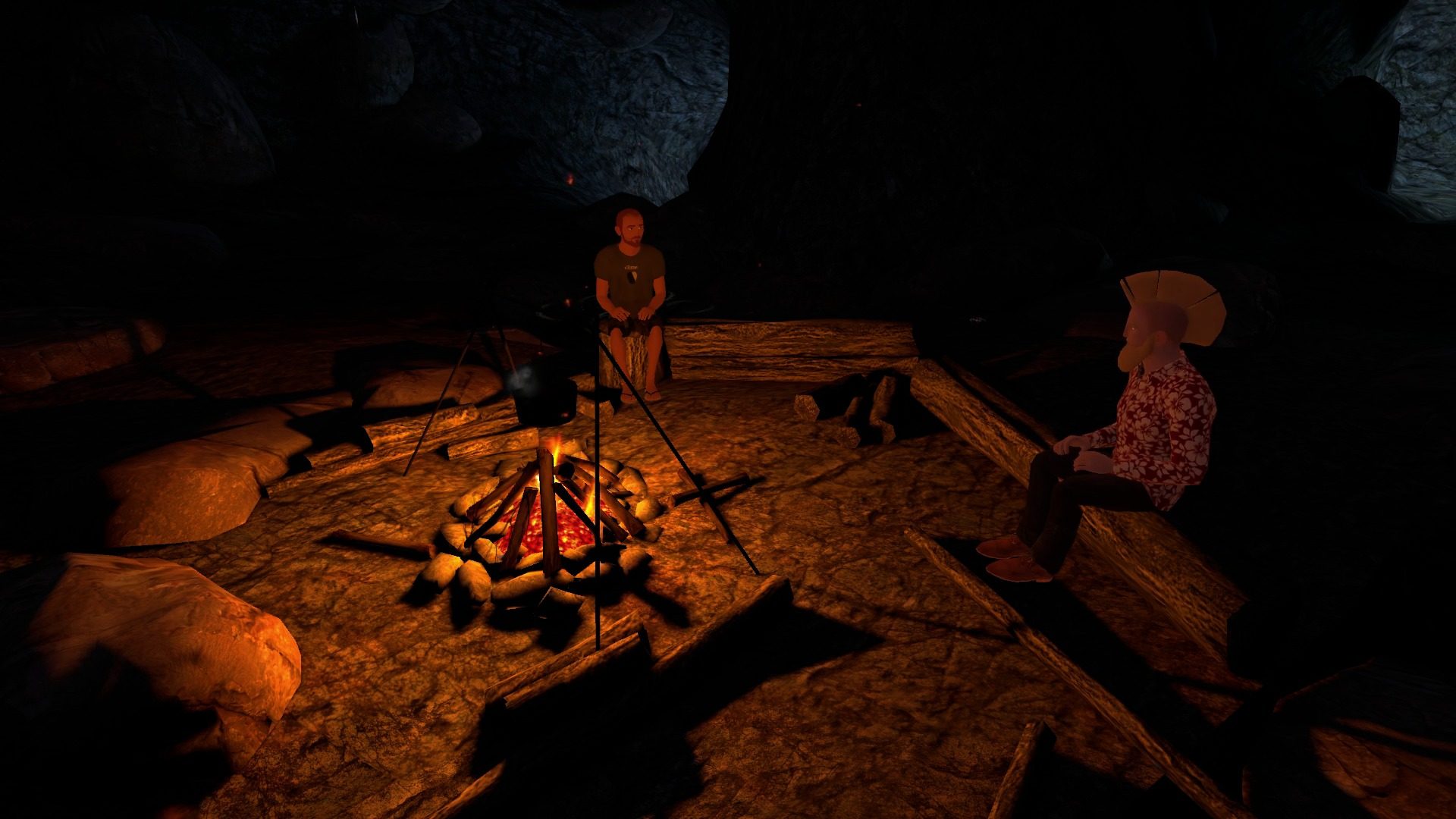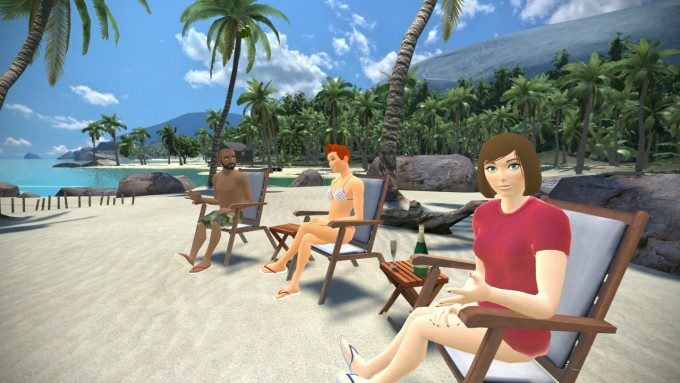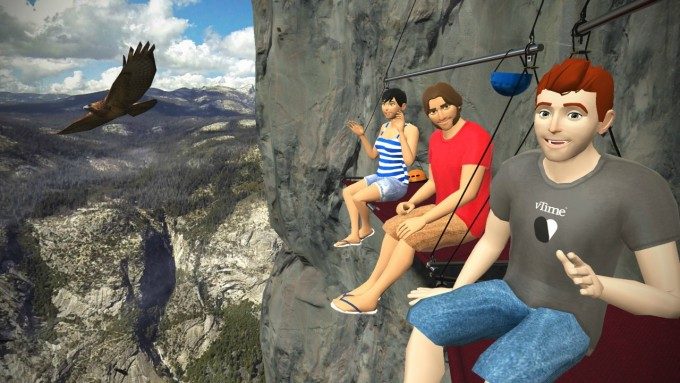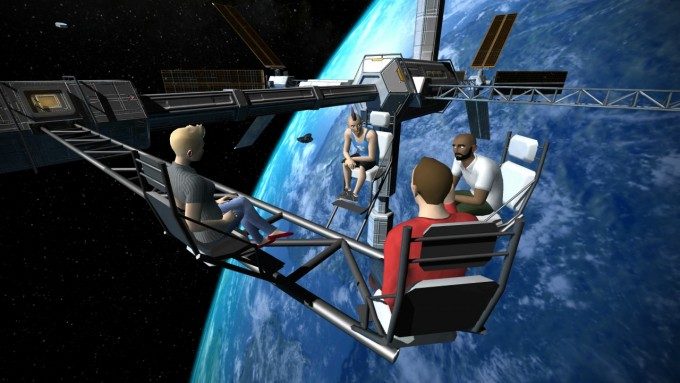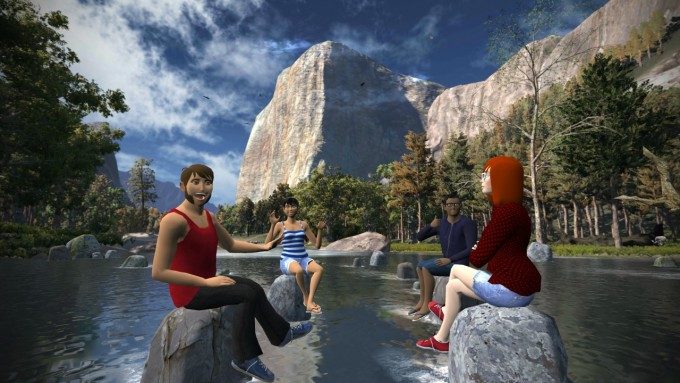Starship, a Liverpool-based digital entertainment studio, has today released vTime on the Gear VR store, the mobile platform’s latest social VR app. I got a chance to check out vTime’s alpha and sat down with Paul Hollywood, the studios product development director, to find out more.
vTime is essentially organized like a social network, allowing you to search other users by name and subsequently send friend requests. And like a social(able) network, once a request is mutually accepted, you then have access to that person in your ‘Connections’ submenu, and will receive notifications whenever they pop into vTime. From there, you simply send a chat request, wait for it to be accepted, and you’re chatting face-to-face with your buddy in VR in the location of your choosing.
Meeting people isn’t just done by scouring your friends-of-friends like on Facebook though, as the app also has a mode that lets you discover random matches, which opens the possibility of rooms based on hobbies and other interests. A profile section is still under development to facilitate this.
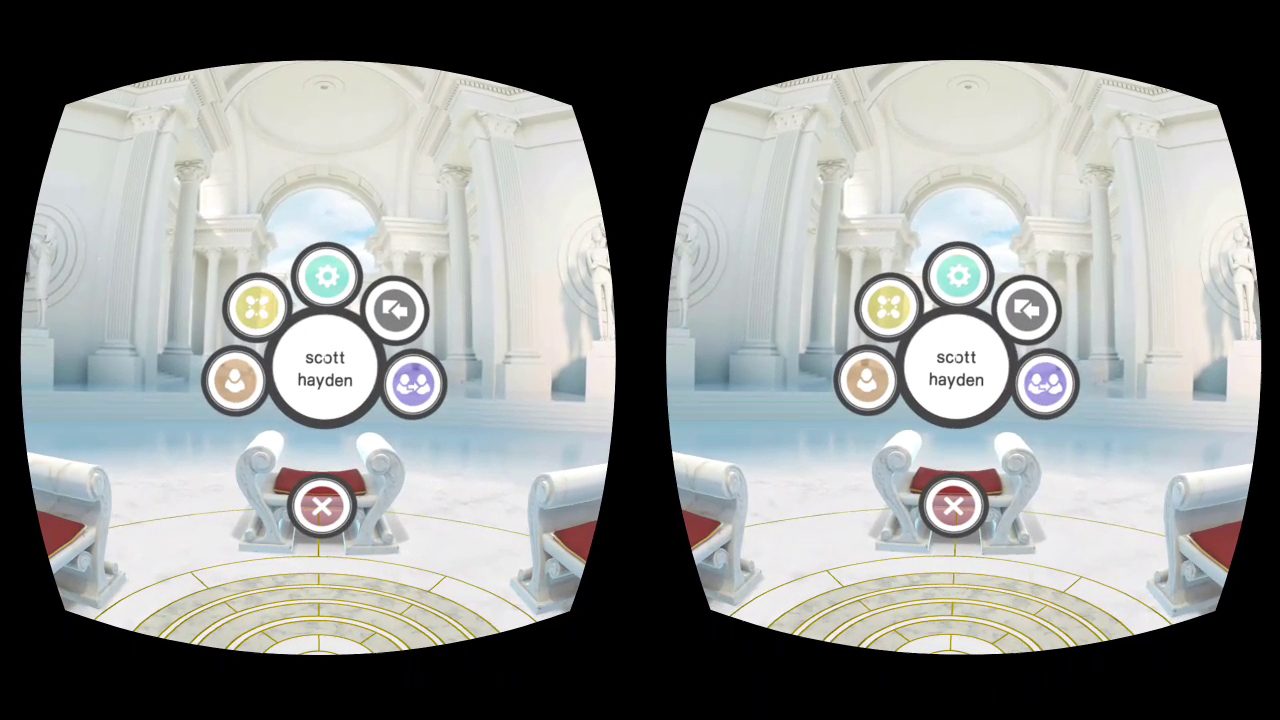
An intuitive, gaze-based UI makes navigating the app a very simple and refreshingly easy affair. You have plenty to choose from too: avatar customization, friends, themed chat rooms, even a room where you can host shared viewings of 360 degree still images. Paul Hollywood, Starship‘s Product Development Director, told me that soon the platform’s content library will allow you to upload images and video to their cloud back-end and share them in a vTime session with other people. That would be a first for mobile social VR, and could open the door to showing photos and home video to friends and family while connected remotely. This feature is reportedly coming in Q1 2016.
See Also: ‘Convrge’ Announces Gear VR Beta with Cross-Platform YouTube Viewing
Themed chat rooms, like the vacuum of space at low Earth orbit, or below a reproduction of Yosemite National Park’s El Capitan rock formation, currently allow up to 4 people at a time—making it small-scale environment for intimate chats rather than the free-for-all of larger scale social VR. Take note however: like Oculus Social, avatars are confined to predetermined seats within any given area, so there is no in-room navigation whatsoever.
What amazed me most of all was the level of performance that vTime managed to squeeze out of the Gear VR platform’s mobile processor. Hollywood told me that the complex scenes I saw around me were in fact a clever blending of a rendered space and pre-rendered 3D 360 video. If he hadn’t clued me in to that, I don’t think I would have noticed. The addition of randomly queued character events, like a scuttling crab or a stork on his walk across the beach, gave us something gab about at as we discussed the future of vTime.
Avatars
Fans of Polygon’s Monster Factory will find the avatar creation tool somewhat lacking in comparison to some of the slider-based systems available on AAA titles, but clearly leaves you with enough options to make a Hawaiian shirt-wearing techno viking. Clothes, facial hair, sex and skin color are all customizable in vTime.

Much like Oculus Social, vTime generates some character movement to make the avatars seem more life-like. But whereas Oculus Social adds in some sneaky eye movement, vTime adds in mouth, eyes, body, and hand movement based on audio input alone. The effort is well-meaning, considering the Gear VR only has headtracking, but I found myself looking down at my own hands to see them flailing without my consent.
Proprioception, or the body’s innate understanding of it relative position, is an important aspect of feeling immersed in a space, and my hunch is if you can’t do it right, you probably shouldn’t do it at all.
As vTime is now in open alpha, there’s little we can do but applaud their innovation, but at the same time I hope to see character animations fade into the metaphorical background until real hand-tracking or positionally-tracked controllers come to mobile VR.
See Also: Video Hands-On with ‘Oculus Social’, Enabling Shared Experiences on Gear VR
Compatibility
This early in VR’s path to mass adoption, the question remains whether the userbase will be large enough to sustain a program that essentially functions as a social network. The inclusion of cross-compatibility with Google Cardboard bodes well numbers-wise for vTime, as there are already millions in the hands of consumers, but the number of devices the program itself can run on—with its slick character animations, slithering creatures, and beautifully rendered foreground—could be limited considering the high GPU load required. Granted, the version I tried was intended for the Gear VR-compatible flagship phones, so there’s no telling what the studio will sacrifice to get it running lower speced handsets.
Although the team is focusing on mobile VR at the moment, the studio is also an official PlayStation VR developer, have an HTC Vive developer kit, and an Oculus Rift DK2, and they to bring the platform to PC and console VR devices in the future.
“The interesting thing is the platform that we’ve created in terms of communication aspect is agnostic to those platforms, so you can join in. obviously with the higher end devices that are running much more powerful chipsets and graphic processors that we can take the same environment that we’ve created, and instead of a skybox on mobile, it’ll be true 3D. So we’ve created quite a clever pipeline for high end visuals for pc and console based vr that we then scale down to run on lower-end mobile devices,” said Paul Hollywood.
Hollywood told me that the vTime Cardboard app be cross-compatible with Gear VR upon its release in Q1 2016.
If that’s not enough features, a companion app for PC will be made available so observers can watch a conversation and record anything that happens in the space if they’re invited.

